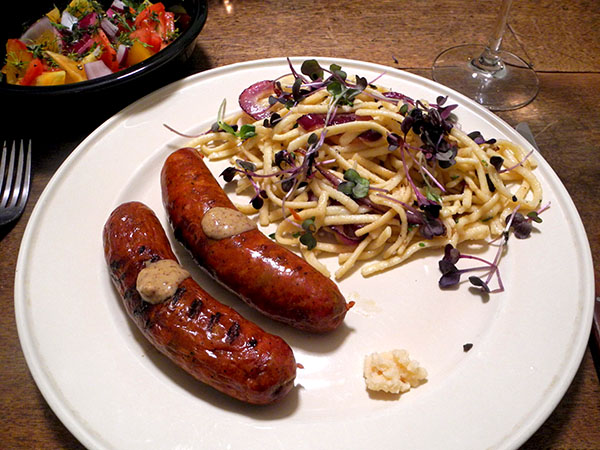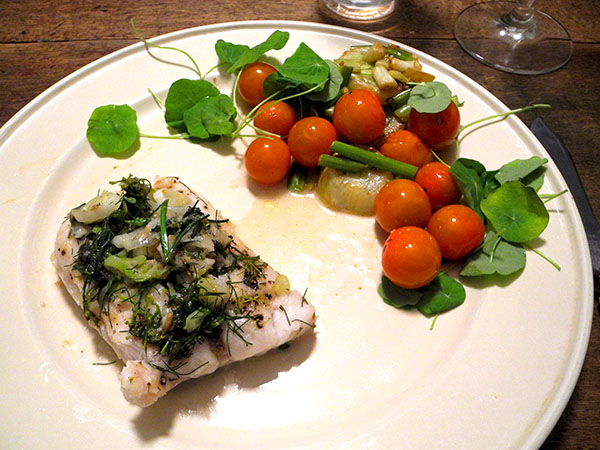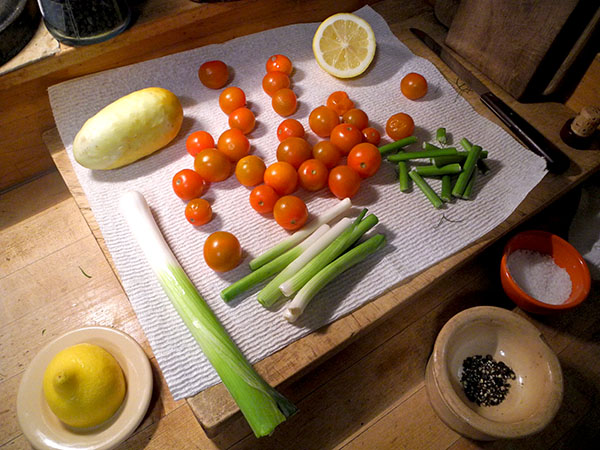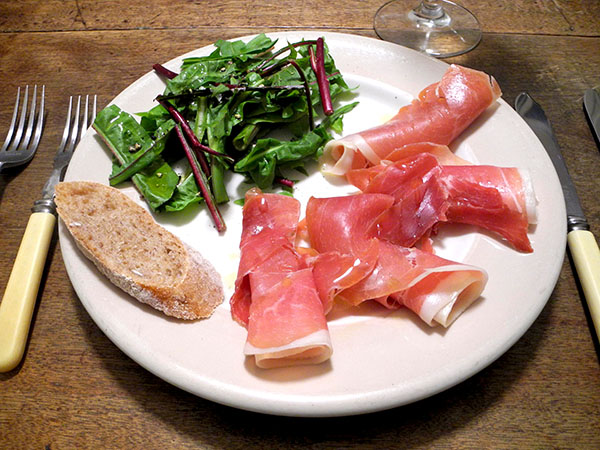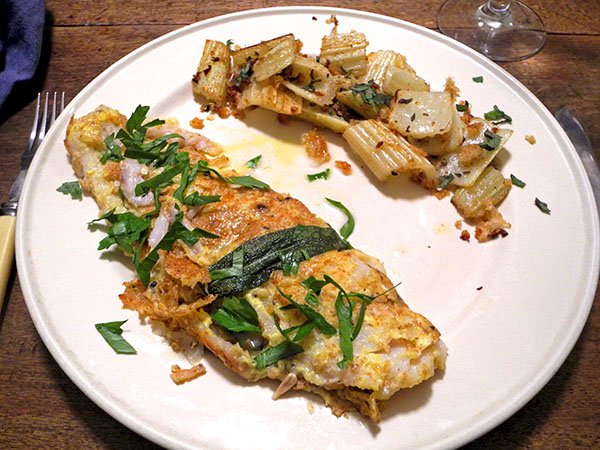
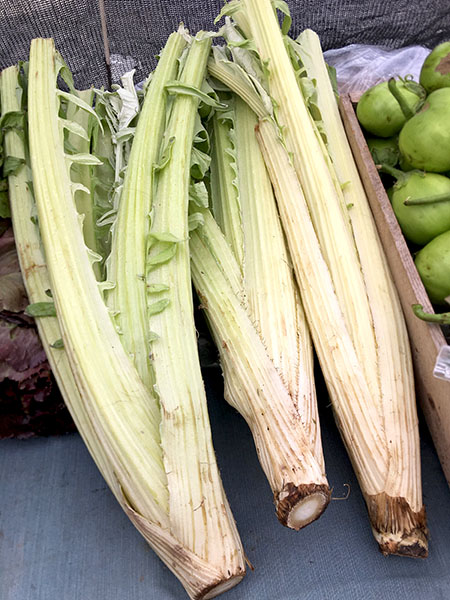
I was pretty excited to find cardoons in the Greenmarket on Monday. The excitement continued all the way through its several cooking processes – even while working inside a very warm and humid kitchen – and it survived the entire meal.
Barry, who is crazy about artichokes, which are related to cardoons (both are thistles) was less enthusiastic, because he thought they were too bitter, even after some extended boiling and sautéing (“a bit like eating only the outermost leaves of an artichoke”). I think I have a higher tolerance for weird, medicinal, or bitter flavors (it’s why Barry is almost always the one who tests the wine).
The recipe I used asked for mushrooms. I didn’t have any, although had I known I could have easily brought some home from Union Square. I was reasonably confident I could do without them, and with most recipes that would be possible, but here their presence would probably have moderated some of the acidity. The other recipes for these ‘artichoke thistles’ all seemed to involve either an oven or some deep frying, and I wanted to avoid both expedients.
I think I’ll know better what to expect next time, and there will definitely be a next time. I’ve assembled several new recipes even since preparing last night’s dinner.
There were herbs (there area almost always herbs), sage and parsley for the hake, peppermint for the cardoons.
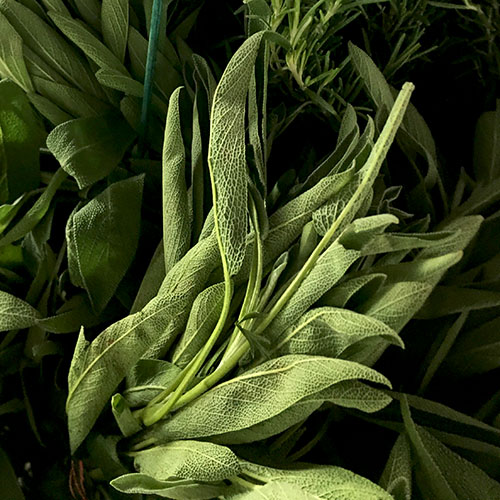


- two hake fillets (a total of one pound), from P.E. & D. D. Seafood, dredged in local North Country Farms Stone Ground Whole Wheat Flour seasoned with plenty of sea salt and fresh-ground Tellicherry pepper, dipped in a shallow bowl in which one egg from Millport Dairy and about a tablespoon of Trickling Springs Creamery 2% milk had been beaten together with a fork, sautéed in 2 tablespoons of Organic Valley ‘Cultured Pasture Butter’, along with 3 very large fresh sage leaves from Phillips Farms, inside a heavy tin-lined oval copper pan for about 7 minutes, turning the sections half of the way through, then sprinkled with organic lemon juice from Whole Foods Market and the small amount of pan juices that remained, arranged on 2 plates, garnished with chopped parsley from Keith’s Farm, served with lemon wedges on the side
- one stalk of cardoons form Alewife Farm, trimmed, cut into one-inch lengths, prepared (including blanching for about 20 or 25 minutes), along the lines of these instructions, placed without crowding too much, over medium heat inside a large heavy cast iron well-seasoned pan after several tablespoons of the same Organic Valley butter had been placed in it, had melted, and the had foam subsided, the flame reduced to medium-low, the vegetables sautéed, stirring occasionally, until they took on a bit of color, or for about 10 to 12 minutes, followed by one section of an orange/gold dried habanada pepper and one large clove of Rocambole garlic, chopped, from Keith’s Farm, cooked for a very few minutes, or until the garlic was tender, and finally about half a cup of fresh bread crumbs (a white baguette from Whole Foods Market baked a day or two before) and a pinch of salt, the heat turned up to medium-high, and the contents of the pan cooked, stirring occasionally, until the crumbs browned a bit and the cardoons fully tender (and, ideally, sweet), or about 5 minutes longer, the dish seasoned with sea salt and freshly-ground Tellicherry pepper, arranged on the plates, a bit of lemon juice and some chopped peppermint from Phillips Farm sprinkled over the top
- the wine was a California (Clarksburg) white, Richard Bruno Clarksburg Chenin Blanc 2016, from Naked Wines
- the music was the album, ‘Ligeti, Murail and Benjamin: Musica Viva Vol 22’, George Benjamin conducting the Bavarian RSO and Pierre-Laurent Aimard




